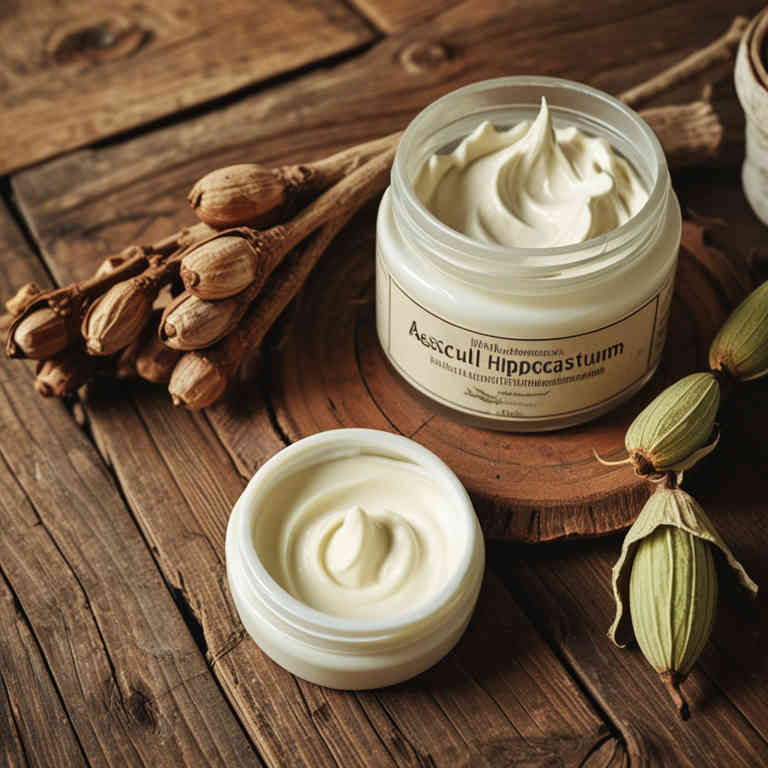Aesculus hippocastanum cream for medicinal use

Aesculus hippocastanum cream is a topical herbal preparation made from the extracts of the horse chestnut tree.
It is commonly used in herbalism to treat conditions such as varicose veins, hemorrhoids, and other circulatory disorders. The cream works by improving blood flow and reducing inflammation due to its active compound, aescin. It is typically applied to the affected area several times a day as directed.
This preparation is valued for its soothing and anti-inflammatory properties in traditional herbal medicine.
Uses
Aesculus hippocastanum cream has been used to treat various circulatory and musculoskeletal conditions for centuries.
Historically, it was employed in traditional medicine, particularly in Europe, to alleviate symptoms of varicose veins, swelling, and leg cramps. The preparation is derived from the horse chestnut tree, which has long been valued for its astringent and anti-inflammatory properties. In modern times, it is commonly used in topical formulations to reduce inflammation, improve blood circulation, and support skin health.
Its continued use reflects a blend of traditional wisdom and contemporary pharmacological understanding.
Benefits
Aesculus hippocastanum cream has health benefits such as reducing inflammation and improving circulation.
It is commonly used to alleviate symptoms of varicose veins and leg cramps. The cream contains compounds that may help strengthen blood vessels and promote better blood flow. It is also believed to support the healing of wounds and reduce swelling.
However, it should be used with caution and under the guidance of a healthcare professional.
Constituents
Aesculus hippocastanum cream active constituents include saponins, alkaloids, and flavonoids.
These compounds are believed to have anti-inflammatory and circulatory benefits. Saponins may help improve blood flow and reduce swelling. Alkaloids contribute to the cream's potential in supporting vascular health.
Flavonoids are known for their antioxidant properties, which may aid in reducing oxidative stress.
Preparation
To make Aesculus hippocastanum cream, start by selecting fresh or dried horse chestnut bark, which is the primary source of the active compound aescin.
Clean the bark thoroughly and grind it into a fine powder using a mortar and pestle or a food processor. Next, mix the powdered bark with a base of melted beeswax and a carrier oil such as olive oil or jojoba oil in a double boiler, stirring continuously until the mixture is smooth and well combined. Allow the mixture to cool slightly before adding a small amount of distilled water or a mild herbal infusion to achieve the desired consistency.
Finally, transfer the cream to a clean, airtight container and store it in a cool, dark place for up to one month.
Side Effects
Aesculus hippocastanum cream may lead to skin irritation, redness, and itching in some individuals due to its potent alkaloid content.
This cream is traditionally used for its anti-inflammatory and circulatory benefits, particularly in treating conditions like varicose veins and hemorrhoids. However, prolonged use can cause systemic absorption, potentially leading to more severe side effects such as nausea, vomiting, and even cardiac issues. It is contraindicated during pregnancy and breastfeeding due to its toxic properties.
Always consult a healthcare professional before using this preparation to ensure safety and proper application.